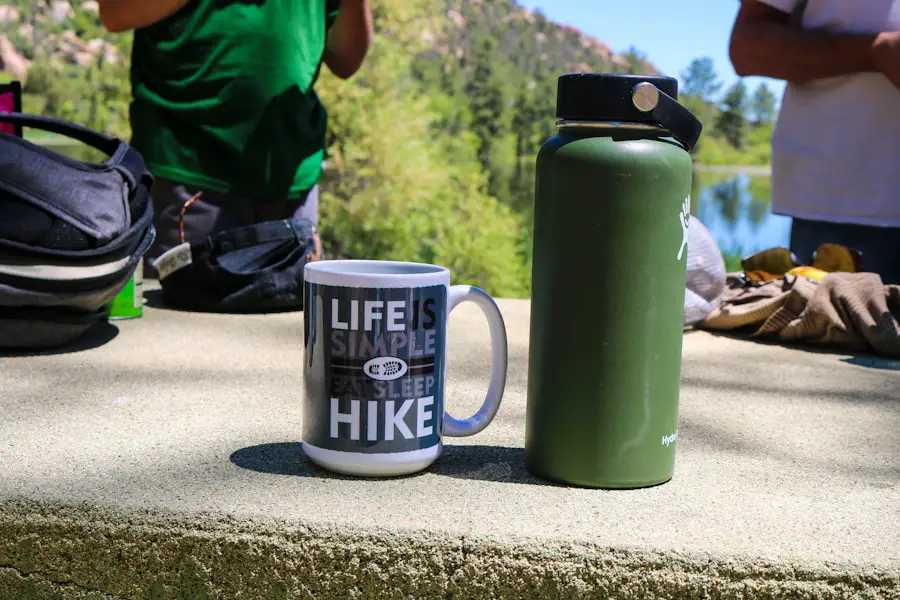Scrambling is an exhilarating outdoor activity that lies somewhere between hiking and climbing. It involves traversing steep, rocky terrain where the use of hands is often necessary for balance and stability. Unlike traditional climbing, which typically requires specialized equipment and techniques, scrambling can often be accomplished with minimal gear, making it accessible to a broader range of outdoor enthusiasts.
The essence of scrambling is to navigate through rugged landscapes, often in remote areas, where the thrill of adventure meets the beauty of nature. Understanding the grading system for scrambling routes is crucial for anyone looking to engage in this activity. Routes are generally classified into different grades based on their difficulty, exposure, and technical requirements.
For instance, Grade 1 scrambles are typically straightforward and may only require the use of hands for balance, while Grade 3 scrambles can involve more challenging moves and significant exposure to heights. Familiarizing oneself with these grades helps in selecting appropriate routes that match one’s skill level and comfort with heights, ensuring a safer and more enjoyable experience.
Key Takeaways
- Scrambling involves using hands and feet to climb steep and rocky terrain, requiring a good level of fitness and agility.
- Essential gear for scrambling includes a helmet, sturdy footwear, a harness, and a rope for more technical routes.
- Scrambling routes can range from easy to extremely difficult, with variations in terrain and technical challenges.
- Navigating challenging terrain requires careful route planning, map reading, and the ability to assess and adapt to changing conditions.
- Safety precautions for scrambling include checking weather conditions, informing others of your plans, and carrying emergency supplies.
Essential Gear for Scrambling Safely
While scrambling does not demand the extensive gear required for climbing, having the right equipment is essential for safety and comfort. A sturdy pair of hiking boots with good ankle support and a grippy sole is paramount. These boots should provide traction on rocky surfaces and protect the feet from sharp stones or uneven ground.
Additionally, wearing breathable, moisture-wicking clothing can enhance comfort during strenuous activity, allowing for better temperature regulation. Another important piece of gear is a helmet. Although scramblers may not be scaling vertical cliffs, loose rocks can pose a significant hazard.
A lightweight climbing helmet can protect against falling debris or accidental bumps against rock faces. Furthermore, carrying a small backpack equipped with essentials such as water, snacks, a first-aid kit, and a map or GPS device is advisable. This ensures that you remain hydrated and nourished while also being prepared for any minor injuries or navigational challenges that may arise during your adventure.
Understanding the Different Types of Scrambling Routes

Scrambling routes can vary widely in terms of their characteristics and challenges. Some routes may follow well-defined paths with minimal technical difficulty, while others may require navigating through complex rock formations or steep inclines. Familiarizing oneself with these different types of routes can significantly enhance the scrambling experience.
For example, ridge scrambles often provide stunning panoramic views and a sense of exposure that many adventurers seek. These routes typically involve traversing along the crest of a mountain range, where the terrain can be both exhilarating and demanding. In contrast, gully scrambles involve ascending through narrow channels between rock walls.
These routes can be more technical due to the potential for loose rocks and varying levels of difficulty depending on the specific gully. Understanding the nature of these different types of scrambles allows individuals to choose routes that align with their skills and preferences while also preparing them for the unique challenges each type presents.
Tips for Navigating Challenging Terrain
| Tip | Description |
|---|---|
| 1 | Use proper footwear with good traction |
| 2 | Stay hydrated and take regular breaks |
| 3 | Use trekking poles for stability |
| 4 | Plan your route and be aware of the terrain |
| 5 | Keep a steady pace and watch your step |
Navigating challenging terrain requires a combination of physical skill and mental acuity. One of the most important tips for successful scrambling is to maintain three points of contact with the ground whenever possible. This technique provides greater stability and balance, especially on steep or uneven surfaces.
By keeping two hands and one foot—or two feet and one hand—on solid ground, scramblers can reduce their risk of slipping or falling. Additionally, it is crucial to assess each move carefully before committing to it. Taking a moment to evaluate handholds and footholds can prevent accidents and ensure that you are making safe choices as you progress along the route.
When faced with particularly tricky sections, it may be beneficial to backtrack and find an alternative path rather than forcing a move that feels uncertain. Patience is key; rushing through difficult sections can lead to mistakes that compromise safety.
Safety Precautions for Scrambling in Hiking
Safety should always be a top priority when engaging in scrambling activities. One fundamental precaution is to always inform someone about your planned route and expected return time before heading out. This way, if something goes awry, others will know where to look for you.
Additionally, checking weather conditions prior to embarking on a scramble is essential; sudden changes in weather can create hazardous conditions such as wet rocks or reduced visibility. Another critical aspect of safety is recognizing your limits. It’s important to choose routes that match your skill level and experience.
If you encounter a section that feels beyond your capabilities, it’s wise to turn back rather than risk injury. Carrying a first-aid kit is also advisable; being prepared for minor injuries can make a significant difference in remote areas where help may not be readily available.
The Mental and Physical Benefits of Scrambling

Engaging in scrambling offers numerous mental and physical benefits that contribute to overall well-being. Physically, scrambling provides an excellent workout that engages multiple muscle groups, enhancing strength, endurance, and flexibility. The varied movements required—such as climbing, balancing, and navigating uneven terrain—help develop core stability and improve coordination.
This full-body workout not only builds physical fitness but also enhances overall agility. Mentally, scrambling can serve as a powerful stress reliever. The focus required to navigate challenging terrain allows individuals to immerse themselves in the present moment, providing a break from daily stresses and distractions.
The sense of accomplishment that comes from successfully completing a scramble can boost self-confidence and foster a sense of connection with nature. Moreover, the breathtaking views often encountered during scrambles can evoke feelings of awe and inspiration, further enhancing mental well-being.
How to Improve Your Scrambling Skills
Improving scrambling skills involves a combination of practice, education, and self-awareness. One effective way to enhance your abilities is by seeking out guided scrambles or workshops led by experienced instructors. These opportunities provide valuable insights into techniques and strategies that can improve efficiency and safety while navigating challenging terrain.
Learning from seasoned scramblers can also help you understand how to read routes better and make informed decisions during your adventures. Additionally, regular practice is essential for skill development. Start with easier routes to build confidence before gradually progressing to more challenging scrambles.
Incorporating strength training exercises into your routine can also enhance your physical capabilities; exercises focusing on core strength, leg power, and grip strength will translate well into improved scrambling performance. Finally, maintaining a positive mindset and being open to learning from each experience will foster growth as a scrambler.
Exploring the Best Scrambling Destinations around the World
The world is replete with stunning destinations that offer exceptional scrambling opportunities for adventurers seeking new challenges. One such location is the Lake District in England, renowned for its breathtaking landscapes and diverse scrambling routes. The region features iconic peaks like Scafell Pike and Helvellyn, where scramblers can enjoy both technical challenges and spectacular views over shimmering lakes.
In North America, the Rocky Mountains provide an array of scrambling options ranging from beginner-friendly trails to advanced routes requiring technical skills. Notable areas include Colorado’s Flatirons near Boulder and the rugged terrain of Banff National Park in Canada. Each destination offers unique geological features and varying levels of difficulty, catering to scramblers of all abilities.
Across the globe in New Zealand’s Southern Alps, adventurers can experience some of the most dramatic landscapes on Earth while tackling challenging scrambles like those found on Mount Cook or the Routeburn Track. The combination of stunning scenery and exhilarating terrain makes these locations ideal for those looking to push their limits while enjoying nature’s beauty. In conclusion, scrambling is an engaging outdoor activity that combines physical challenge with mental focus while allowing individuals to connect deeply with nature.
By understanding the basics of scrambling, equipping oneself with essential gear, recognizing different types of routes, practicing safety precautions, and exploring various destinations worldwide, enthusiasts can fully embrace this thrilling pursuit.
If you’re an avid hiker looking to enhance your outdoor experience, you may also be interested in finding the perfect travel pillow for long flights. Check out this article to discover the 5 best travel pillows for long flights this spring. Having the right gear, like a comfortable travel pillow, can make all the difference in your hiking and travel adventures.
Love travel? Join Our Facebook Community For More Tips.
FAQs
What does “scramble” mean in hiking?
“Scramble” in hiking refers to a section of a trail that requires the use of hands as well as feet to navigate. It is more challenging than a regular hike, but not as technical as rock climbing.
What skills are needed for scrambling in hiking?
Scrambling in hiking requires good balance, agility, and the ability to use hands and feet to navigate steep and rocky terrain. It also requires a good understanding of route finding and the ability to assess and manage risk.
What gear is recommended for scrambling in hiking?
For scrambling in hiking, it is recommended to have a good pair of hiking boots with good traction, a helmet for protection from falling rocks, and possibly gloves for hand protection. Some hikers also use a climbing harness and rope for added safety on more challenging scrambles.
What are some popular scrambling routes in hiking?
Some popular scrambling routes in hiking include the Knife Edge on Mount Katahdin in Maine, the Angel’s Landing in Zion National Park, and the Half Dome in Yosemite National Park. These routes offer challenging and exhilarating scrambling experiences for hikers.
